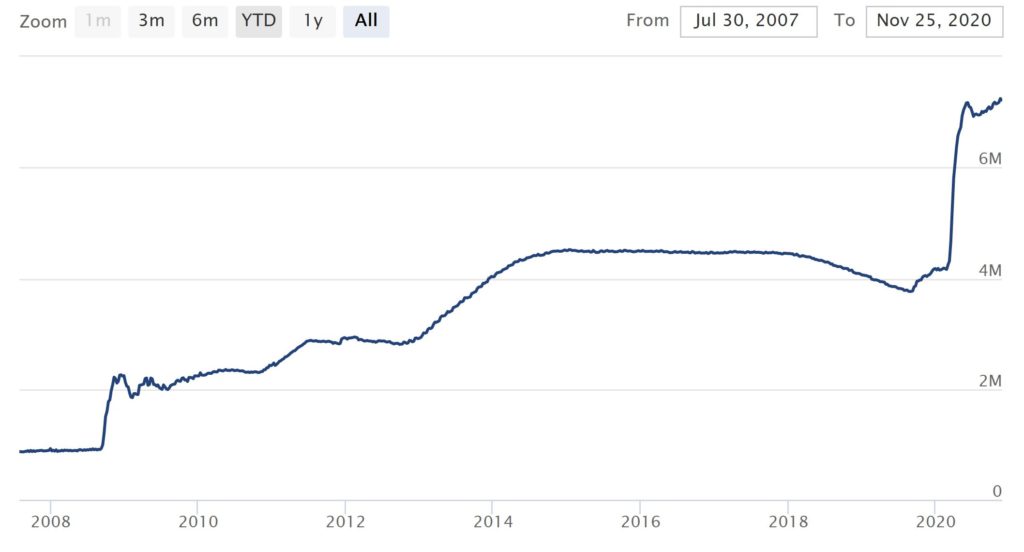Since cash yield almost nothing these days, and bond yield is very low, everyone is pushed into the stock market. Federal reserve’s money printing has been non-relenting. Below is a graph of the federal reserve balance sheet. The M in the chart means Million of Million, which is actually a Trillion.

Until 2008, Fed is able to mostly keep its hand-off from the economy with less than $1T of deficit. The economy functions well on itself and the nation has the power to generate growth without taking on additional debt. Then the money printing happed in 2008 with the subprime and that brought our nation’s debt to $4.5T in early 2015. We had a little normalization program to reduce nation’s debt to $3.8T till late 2019, but in one scoop, we printed $3T in 2020 and likely another $2T – $3T in 2021. So in 13 years, we have grown our nation’s debt by 700%. This represents a significant issue to our long term prosperity. We are essentially borrowing from future generation in order to pay for our lifestyle today. Japan went through this money printing cycle and never truly come out it and I think the whole world is pulling down by the weight of debt.
What does all of these mean for our investments? In the short term, this kind of money printing is a good thing since it stops the deflation pressure we are facing. But it also shows the world that US is no longer willing to be a responsible fiscal citizen anymore. The US dollar index has declined close to 10% while commodity, including gold and bitcoin has rallied along with the stock this year.
In our view, if we continue on this federal reserve money printing route, the traditional 60/40 stock to bond portfolio is no longer valid. One can still keep long bond in one’s portfolio as a hedge against deflation, but it becomes less and less valid growth strategy unless Fed is desperate enough to follow Eurozone and go into negative bond yield. But this strategy of reducing “safer” noncorrelated asset (bond) and increasing stock or commodity holdings has an inherited higher risk level. We need to find more baskets of uncorrelated assets in order to balance out the traditional stock and bond only portfolio.
What we can potentially do is to build a dual-fence portfolio against inflation and deflation. For inflation, buy growth stocks and commodities including gold and bitcoin. In parallel, keep some emergence cash in safe liquid asset and maintain some long/mid US treasury bond to guard against deflation (again, think of Japan). Short term wise, we might experience deflation if Coronavirus continues. But in the long term, we think inflation is unavoidable with this kind of debt level.
